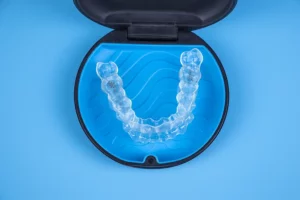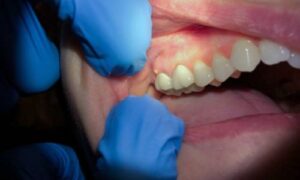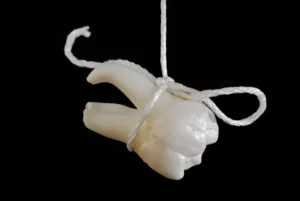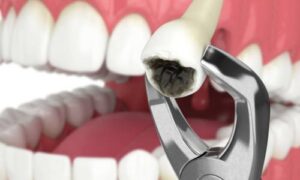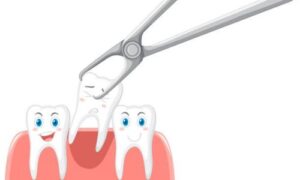So, does getting Invisalign hurt? The answer, like most things in life, is a bit nuanced. Invisalign, the near-invisible alternative to traditional braces, has become popular for achieving a straighter smile. But let’s face it: any orthodontic treatment can conjure images of metal brackets and constant tightening. So, does getting Invisalign hurt? The answer, like most things in life, is a bit nuanced. Invisalign, the near-invisible alternative to traditional braces, has become popular for achieving a straighter smile. But let’s face it: any orthodontic treatment can conjure images of metal brackets and constant tightening.
Brace Yourself (For Comfort, Not Pain)
While Invisalign doesn’t involve metal brackets or tightening appointments, it’s not entirely discomfort-free. The aligners gently but firmly pressure your teeth, gradually shifting them into their desired positions. This pressure can cause temporary discomfort but is typically mild and manageable.
Here’s a breakdown of what to expect:
- Initial Discomfort: When you start wearing a new set of aligners, your teeth might feel sore or tender. This is because they’re adjusting to the new pressure. This discomfort usually subsides within a few days as your teeth settle in.
- Pressure Points: You might experience some pressure on specific teeth, especially when switching to a new aligner tray. This is normal and indicates the aligners are working effectively.
- Tightness: The aligners may feel tight initially, but this sensation should loosen up as you wear them regularly. If the tightness persists or becomes unbearable, contact your orthodontist for further guidance. Remember to follow the recommended wear schedule to ensure optimal results.
Pain vs. Discomfort: Understanding the Difference
It’s important to distinguish between pain and discomfort. Invisalign discomfort is usually a temporary pressure or soreness that fades within a few days. Pain, on the other hand, is more severe and persistent. If you experience any sharp or persistent pain, it’s crucial to consult your dentist or orthodontist to rule out any underlying issues that may need to be addressed. Ignoring severe pain could lead to complications or delays in your treatment progress. It’s always better to be safe and seek professional advice if you are unsure about the level of discomfort you are experiencing.
Factors Affecting Invisalign Discomfort
Several factors can influence how much discomfort you experience with Invisalign:
- Your Pain Tolerance: Everyone has a different pain threshold. People with a lower tolerance might feel more discomfort initially, but it usually improves as they get used to wearing the aligners. Your Treatment Plan: The complexity of your treatment plan can also impact how much discomfort you feel. More severe misalignments or overcrowding may cause more pain as your teeth shift into their correct positions.
- The Amount of Tooth Movement: The more significant the tooth movement required, the more pressure the aligners need to exert, potentially leading to more discomfort during treatment. It’s important to communicate any discomfort with your orthodontist so they can adjust your treatment plan if necessary.
- Your Biology: Some people naturally have more sensitive teeth than others, which can affect how much discomfort they experience during orthodontic treatment. Gum health and bone density can also affect how your body responds to the aligners.
The global clear aligners market is expected to grow from USD 2.5 billion in 2020 to USD 19.02 billion by 2030, at a CAGR of 22.5% from 2021-2030. Source.
Conquering Invisalign Discomfort: Tips and Tricks
The good news is there are ways to manage and minimize Invisalign discomfort:
- Over-the-counter Pain Relievers: Pain relievers like acetaminophen or ibuprofen can help alleviate soreness. Always follow the recommended dosage on the label.
- Cold Therapy: Applying a cold compress or ice pack to your jaw for short periods can reduce inflammation and provide temporary relief.
- Orthodontic Wax: Your dentist can provide orthodontic wax, a soft material you can apply to areas of the aligners that rub or irritate your gums.
- Soft Foods Diet: Sticking to a soft food diet for the first few days after switching to a new aligner tray can minimize pressure on your teeth.
- Chewing Gum (Sugar-Free): Chewing sugar-free gum for short periods can help the aligners fit more snugly and potentially reduce discomfort. However, consult your dentist before doing so.
- Take it Easy: Give your teeth time to adjust to the new pressure. Avoid chewing on hard foods or using your teeth as tools.
Does Getting Invisalign Hurt: The Benefits of Invisalign
While some temporary discomfort is possible, the benefits of Invisalign often outweigh the drawbacks. Here are some reasons to consider Invisalign:
- Discreet Treatment: The clear aligners are virtually invisible, allowing you to straighten your smile without the aesthetic concerns of traditional braces. Invisalign also offers the convenience of removing the aligners for eating, brushing, and flossing. This can make maintaining good oral hygiene easier compared to traditional braces. Overall, Invisalign offers a comfortable and discreet way to achieve a straighter smile.
- Removable for Eating and Brushing: Unlike traditional braces, you can remove the aligners for eating, drinking (except for water), and brushing your teeth, making oral hygiene much easier during treatment. Additionally, Invisalign allows for more flexibility in your diet and oral care routine, leading to a more comfortable experience overall.
- More Comfortable: Overall, Invisalign is more comfortable than traditional braces. You won’t experience the irritation caused by metal brackets and wires and won’t worry about emergency visits for broken brackets or wires. Additionally, Invisalign typically requires fewer office visits for adjustments than traditional braces.
- Faster Treatment Times: In some cases, Invisalign treatment can be completed in a shorter timeframe than traditional braces due to the ability to switch out aligners every few weeks. This can result in quicker adjustments and progress towards your desired smile.
Does Getting Invisalign Hurt? Consulting with a Dental Professional
If you’re considering Invisalign, the best course is to schedule a consultation with a dentist or orthodontist who is experienced in Invisalign treatment. They can assess your needs, discuss the potential for discomfort, and create a personalized treatment plan.
Remember, temporary discomfort can lead to a lifetime of confident smiles.
Does Getting Invisalign Hurt FAQs
Does Invisalign hurt?
Invisalign typically doesn’t cause severe pain, but you might experience temporary discomfort, especially when switching to a new aligner tray. This discomfort usually feels like pressure or soreness and subsides within a few days.
What factors affect Invisalign discomfort?
- Pain tolerance: People with lower pain tolerance might feel more discomfort initially.
- Tooth movement: The more your teeth need to move, the more pressure the aligners exert, potentially leading to more discomfort.
- Individual biology: Some people naturally have more sensitive teeth.
How can I manage Invisalign discomfort?
Here are some tips:
- Over-the-counter pain relievers: Use them according to the label.
- Cold therapy: Apply a cold compress to your jaw for short periods.
- Orthodontic wax: Apply it to areas that irritate your gums.
- Soft food diet: Stick to soft foods for a few days after switching to new aligners.
- Chewing sugar-free gum (consult your dentist first): This can help the aligners fit better and reduce discomfort.
What are the benefits of Invisalign despite some discomfort?
- Discreet treatment: The clear aligners are nearly invisible.
- Removable for eating and brushing: Makes oral hygiene easier.
- More comfortable: No metal brackets or wires to irritate your mouth.
- Faster treatment times (in some cases): Invisalign might be faster than traditional braces.







